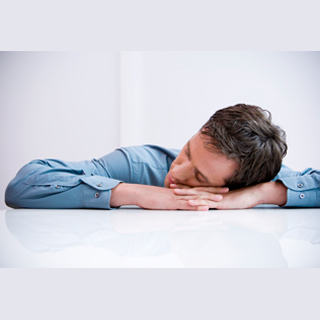
A latest Harvard study was believed to have discovered that exposure to a novel specialized type of light could assist in improving the loss of energy and low spirits thereby restoring people’s summer mood and summer energy level. This is possible because this new light appears to be so efficient that high intensity lighting is no longer needed. More so, the novel light seems to be portable and provides better access to light therapy.
Winter blues is known to be a condition that affects huge groups of people all across the world, particularly in countries with long and dark winters. Mood problems and lack of energy usually appear to begin in autumn and may last well into the spring. It was believed that this condition is more frequent among women as compared to men. For instance, three to four times the number of women in contrast to men are noted to be affected by winter blues.
Depending on a country’s latitude, it was estimated that 15 to 20% of the population experiences these seasonal mood swings. However, the percentage seems to be fairly lower for southern countries. For example, the rate of winter blues in the US is known to be 14%, whereas Finland’s prevalence is 18.4%. Evidently, the symptoms of winter blues are seasonal and are similar to usual ailments namely, mood and energy problems, fatigue, increased appetite, carbohydrate craving, weight gain, concentration difficulties and sleep problems.
As a result of these common symptoms, it could be possible that the number of people troubled by one or more symptoms of winter blues are higher than the prevalence data show. Moreover, the impact on both the physical as well as the psychological well-being of those affected by winter blues may be remarkable. It was noted that light therapy has established to be the most effective treatment for combating winter blues. Over the past two decades, many studies involving thousands of patients seem to have demonstrated the advantage of light for treating winter blues.
Scientists were of the opinion that winter blues and related problems appear to result from the lack of light. In addition, patients may respond to light therapy faster as compared to other treatments.
Prof. Dr. Kasper, Chair of the Department of Psychiatry and Psychotherapy of the Medical University Vienna stated that, “Light boosts and improves mood and energy levels, increases alertness, has an energizing effect, regulates circadian rhythm (our internal body clock) and helps with sleep problems. It is therefore an indispensable treatment for effectively fighting such symptoms.â€
Since long, light therapy appears to have become more reachable to a bigger group of people. While a few years ago, light therapy was noted to be available only in specific institutes and centers. Also, people are observed to have been increasingly using light devices at home for light therapy purposes.
The recent Harvard Medical School study of light therapy devices for domestic use showed that low levels of blue light may possibly produce therapeutic results. Over 80% of the people tested appear to have showed a decrease in symptoms after just one week of light therapy.
Daniel Adams, a senior application scientist of Philips said that, “As a leading company in the area of Health and Well-being, Philips integrates technologies and design into people-centric and meaningful solutions. Based on consumer insights and the proven effectiveness of blue light, Philips developed a portable light therapy device (goLITE BLU HF3330) that provides a comfortable level of the right color of blue light to improve people’s mood and increase energy and alertness. The goLITE BLU is portable with a rechargeable battery so it can be used simply anywhere, at home, at the office and while traveling.â€
The findings of the study revealed that exposure to a low level of blue light could be as effective in treating symptoms such as mood swings and low energy levels as exposure to the intense bright white light that is known to be used in traditional light therapy.
The use of this blue light with a low intensity level seems to have remarkable advantages as compared to the traditional white-light treatment. For instance, it supposedly, allows for smaller, portable light therapy devices that can be used everywhere.
Besides, the light intensity of the therapy could possibly be reduced to more comfortable levels. For example, traditional white light boxes are believed to produce approximately 10,000 lux bright white light, whereas a device that makes use of the effective blue light simply produces 200 lux.
However, the study claims that winter blues should not be confused with winter depression. Winter blues is known to be the moderate form of winter depression, also called as Seasonal Affective Disorder (SAD). Apparently, people suffering from winter blues identify that they are just dragging, not getting their work done, and feeling unhappy in general.
Also, they may experience carbohydrate and sugar cravings which are common. Besides, these people may notice mood problems but are not completely depressed. If one feels depressed, he or she could perhaps make use of light therapy after seeking medical advice.
